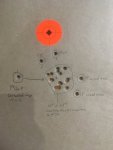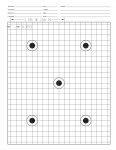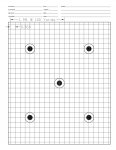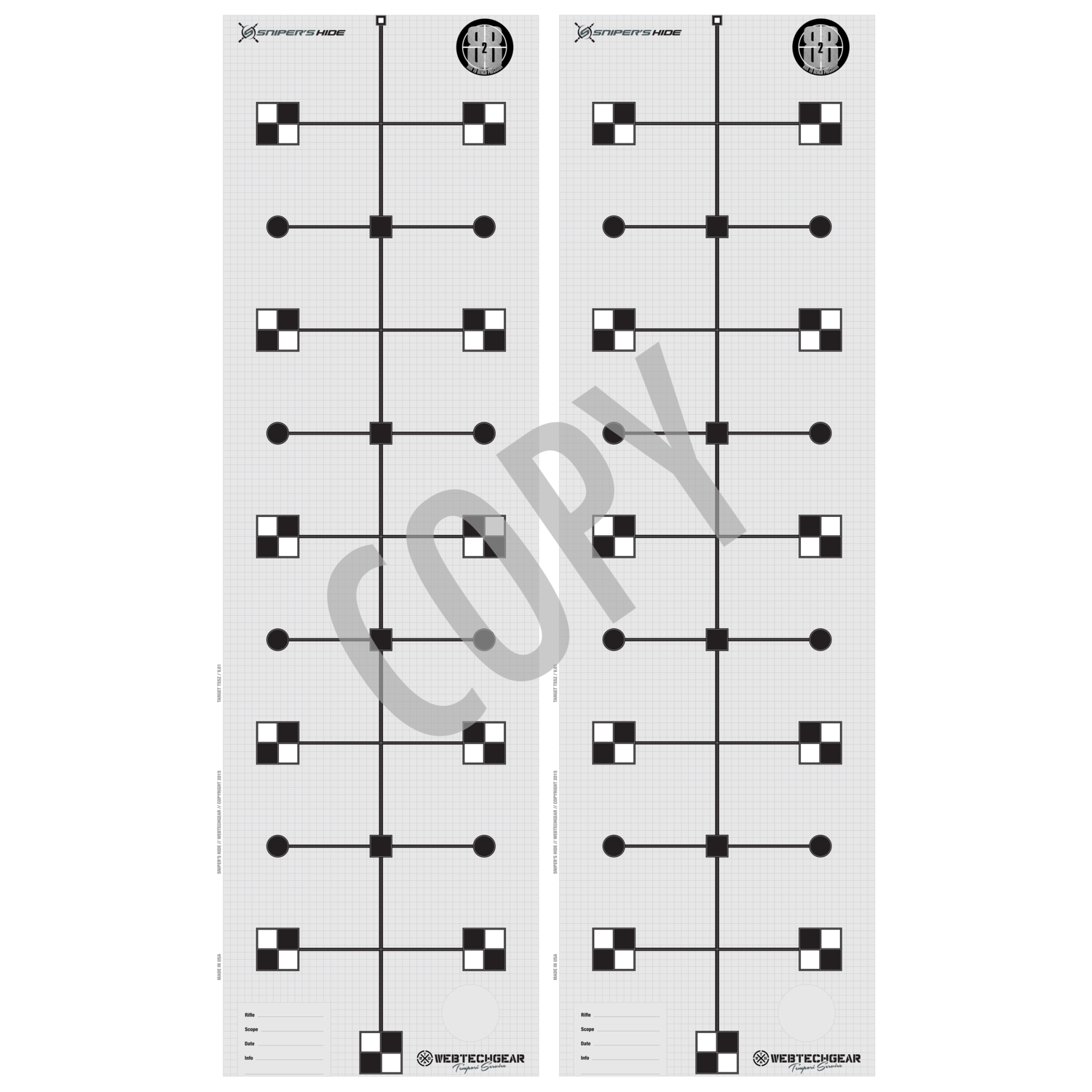Let me play devils advocate for everyone here and see if I can alleviate some tension.
Sometimes people can forget that OP specifically asked for a gridded target, not for the best way to zero a rifle.
BUT sometimes people do not know of better ways of doing things when asking a question so it isn't always a bad thing to suggest a different way of doing something.
It is true that if you have a FFP scope with a hashed reticle then you can typically use it to zero with the same result as using a grid.
BUT if you do not have enough magnification in the scope to easily see the group at the distance you are zeroing. Or not enough clarity. Or you have a 1/8 MOA turret. Or the hash marks are in 1 MIL. Or you have a SFP scope and don't want to have to do conversions (ex. the scope is accurate at 10x but you can only see the group at 25x). Or you have a fixed power scope with a fine duplex reticle, etc... then it would be beneficial to have a gridded target.
Based on the OPs other replies it seems like he may be an instructor or is just trying to introduce a new shooter to shooting and would like to be prepared for someone with either a MOA or a MIL scope. Being prepared for both situations is never a bad thing. It also is not a bad idea to keep in mind that it could be beneficial to start them using their reticle immediately if they have sufficient magnification, FFP and a sufficient reticle to measure it that way. Also if someone is having trouble with that concept it may be better to have the target handy to make it easier to zero in their scope before trying to hit them with more complicated concepts (if you are low of the aim point then dial up 1 click for each box that the bullet missed by is a much easier thing to comprehend then vomiting angles, FFP, hash marks, mils, moa etc at a brand new shooter you are trying to get hooked by getting them a ding at 1000 yards).
I just shot this group today. Since I had to make sight correction to center up the group, the first shot was .4 mils left of the group. In doing group analysis back at the house, how would you suggest I use the reticle to figure out exactly where that shot belongs in the group?
How would I use the reticle to figure out exactly how far away from the group center those flyers are?
If this was an ELR load I was trying to zero, how would I use the reticle to find the mathmatical center and exactly calculate what my remaining amount of zero offset was?
This is a valid point. Using calipers would be a fine way to get the info you want but might I suggest an alternative. There is a phone app called rangebuddy(android) / submoa(apple) that will allow you to easily get the center of the group without having to eyeball it as long as you have a reference point to give it (such as the width of the orange dot). The app can be challenging to get used to but once you do it is quite nice to use without having to measure everything by hand. Here is an example of some subpar shooting but it shows the app in use (I use the calipers to calibrate the reference):
Note: I did not set the aim point in the app even though I should have but you can see the yellow cross as the center of the group. You manually place the rings on the bullet holes so you can ignore the fliers if you like. There is a deskstop app (IIRC it is called on target) but I have never used it and I find the phone apps sufficient.






